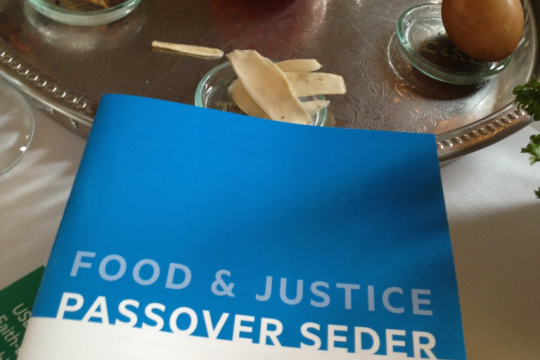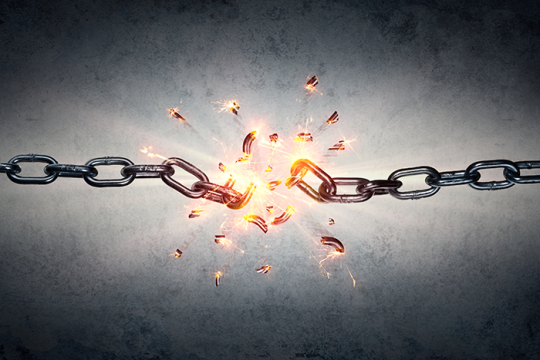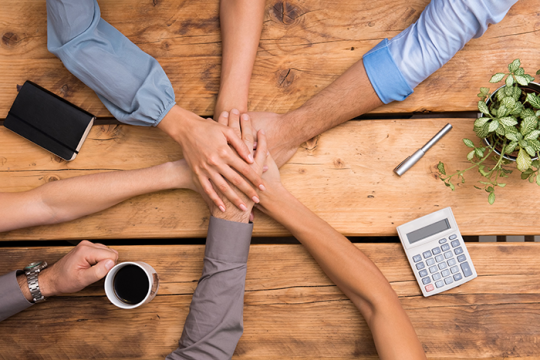Already this month, we have celebrated inclusion in its many forms: making congregations accessible to those with disabilities, highlighting women's stories in the Torah and Talmud, breaking the Jewish glass ceiling for women, and of course, celebrating LGBTQ Pride Month. Women of Reform Judaism was ahead of its time and the entire Reform Movement in 1965, when it publicly supported the decriminalization of homosexuality. Since then, WRJ has not stopped speaking up for LGBTQ people and their rights as citizens and as Jews - and the entire Reform Jewish Movement has now joined in.
As a young, queer Jew growing up in a Reform synagogue, I didn't know that these resolutions were being made - that the women in our temple sisterhood were a part of a larger movement to support LGBTQ rights. But I never worried about acceptance in my community. Our small post-confirmation class with the rabbi frequently discussed Reform & Conservative Judaism's support of same-sex marriage. Our adult youth group advisors were a lesbian couple who were married by our rabbi. I knew that if and when I came out, it would be okay.
We all know that the Reform Movement supports LGBTQ Jews, but how can congregations, sisterhoods, and brotherhoods put this audacious hospitality into practice? Here are some ideas:
- Learn the lingo. Don't wait for an LGBTQ person to join your community to learn about how to use more inclusive language. Consider hosting an LGBTQ sensitivity training in your synagogue, for the general population and for leadership. Don't forget to put this new knowledge into action! Always ask for preferred names and pronouns, don't assume that you can tell someone's sexual orientation or gender identity by what they're wearing. Respect the labels individuals use (or don't use) to describe themselves.
- Integrate LGBTQ themes into your programming. Does your congregation have a book club? Consider reading Stone Butch Blues by Jewish transgender activist Leslie Feinberg. Does your sisterhood enjoy fundraising? Consider holding an event to support The Trevor Project (a LGBTQ Youth suicide hotline) or a local chapter of GLSEN (the Gay, Lesbian, and Straight Education Network). If your members prefer to support causes through volunteering, consider asking a local LGBTQ organization how you can get involved. To integrate our celebration of LGBTQ Jews with our practice of Judaism, organize a Pride Shabbat: The Religious Action Center has prayers and sermons to help!
- Support LGBTQ visibility and be visible yourselves. Having LGBTQ leaders is invaluable for making LGBTQ members, out or not, feel accepted and at home. LGBTQ leaders also add diversity that can strengthen your community and add a different perspective. I can't emphasize enough how meaningful it was for me to have Jewish, lesbian leaders as role models for me in my synagogue, and motivating me to be the youth group co-president for two years. My heart still jumps every time I see a rainbow flag sticker in a window or a form with gender-neutral language; small symbols of acceptance can go a long way.
Related Posts
Image

Passover 2024: The Three Central Messages of Pesach
The Exodus story is the master narrative of the Jewish people. As most of us know, it tells the story of the Hebrew slaves in Egypt and the rise of Moses as their liberator. It reminds us that in 2024, the universality of Passover's three-part message again reverberates through the generations: freedom, love, and justice.
Image

Modern-Day Plagues of Injustice and Inequality
On Passover, we recount the Ten Plagues that were inflicted upon the Egyptian people. Here are some of the "plagues" and injustices that afflict our present-day society -- and actions you can take.
Image

Setting Your Leaders Up For Success
It's board nomination season again! Time to compile lists, get recommendations, and start calling the future leaders of your congregation. The URJ has resources, advice, and initiatives to set you and your board up for success.